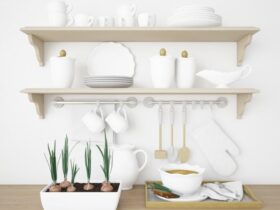In a world where room space is often at a premium and design aesthetics are a major driving factor, pocket doors have emerged as a popular solution for both homeowners and designers. These sleek sliding doors slide effortlessly into the adjacent wall, saving space and providing a stylish alternative to traditional swing doors. Pocket doors are not just a practical solution for small spaces – they add an air of elegance and can enhance the flow of a room. If you’re curious about integrating this clever design feature into your home, this comprehensive guide can help you understand the benefits, types, installation, design considerations, and more.
Benefits of Pocket Doors
Space-Saving Functionality
Arguably the most significant advantage of pocket doors is their ability to save space. Unlike traditional hinged doors that swing open, pocket doors neatly slide into a compartment within the adjacent wall. This design element enables you to maximize your interior space, making them ideal for tight or restricted areas where every square inch counts.
Improved Room Flow and Flexibility
The non-obtrusive operation of pocket doors also enhances the flow and flexibility of a room. Open floor plans benefit from the seamless transitions pocket doors offer, and they can be particularly useful in creating temporary separate spaces within larger areas.
Enhanced Aesthetics and Design Options
Pocket doors can be seen as a statement design feature, adding a modern touch to your home. Their discreet placement allows for a cleaner look, especially in rooms where a swinging door could disrupt visual lines. They also offer design versatility, making them a great accompaniment for a wide range of interior styles.
Types of Pocket Doors
Single Pocket Doors
The most common type, single pocket doors slide into the wall on one side. They are simple to install and provide the functionality of a space-saving door without the complexity of accommodating for a double pocket door.
Double Pocket Doors
Double pocket doors come in pairs and slide into opposite sides of the wall, meeting in the center when closed. This type adds a touch of luxury and is perfect for creating a grand entrance or dividing larger areas when closed.
Glass Pocket Doors
Glass pocket doors, whether single or double, are a striking interior design feature. They offer the functionality of traditional pocket doors while allowing light to flow through the space. This can be particularly useful in maintaining a sense of openness or lighting continuity between areas.
Custom Pocket Doors
For those who have specific size or design requirements, custom pocket doors offer a tailored solution. These can be made to fit unique spaces and crafted from a variety of materials to suit your interior aesthetic.
Installation Process
Preparing the Opening
The first step in the installation process is to ensure the space is suitable for a pocket door. Check for any electrical wiring or plumbing that might be running through the wall, and plan to reroute if necessary. Once the path is clear, the opening can be framed.
Framing and Installation Steps
Framing for a pocket door is more complex than for a regular hinged door, and it is essential to get right to ensure the door slides smoothly and remains structurally sound. The frame will need to support both the weight of the door and the wall it slides into. Once the frame is in place, door hardware, tracks, and the door itself can be installed.
Finishing Touches
Once the pocket door is in place, the surrounding wall will need to be finished. This can be done with drywall that blends in seamlessly with the rest of the wall, ensuring the door remains out of sight when open.
Design Considerations
Choosing the Right Style and Material
Pocket doors come in a variety of styles and materials, from classic wood to sleek glass. Your choice should be guided by the overall design aesthetic of your home and the specific purpose of the door. For example, a rustic wood door may be perfect for a farmhouse kitchen, while a frosted glass door might be more suited to a contemporary bathroom.
Matching Pocket Doors with Existing Decor
To ensure your pocket door complements your existing decor, consider how it will tie in with the surrounding elements – from the type of flooring to the paint on the walls. A well-matched door can appear as a natural extension of the room, further enhancing its appeal.
Incorporating Hardware and Accessories
The hardware you choose for your pocket door – handles, pulls, and locksets – can significantly impact both the functionality and the look of the door. Make sure to select hardware that is not only visually appealing but also functional and durable. Additionally, consider accessories such as door guides and soft-close mechanisms to improve the operation and longevity of your pocket door.
Maintenance and Care
Cleaning and Lubricating
Regular maintenance of your pocket door is straightforward and involves keeping the tracks and wheels clean, removing dirt and debris that can impede smooth sliding. Lubricating the moving parts of the door is also crucial to prevent friction and wear that can lead to operational issues.
Addressing Common Issues
Like any mechanical device, pocket doors can develop issues over time. These might include sticking, not sliding all the way, or uneven operation. Most issues can be resolved through simple adjustments to the door’s hardware, such as tightening or loosening screws, realigning tracks, or replacing worn-out parts.
Extending the Lifespan of Pocket Doors
To extend the lifespan of your pocket doors, treat them with care. Avoid slamming the door or using excessive force when opening and closing. Being mindful of the door’s operation can go a long way in preventing premature wear and tear, ensuring you get the maximum benefit from this space-saving design feature.
Case Studies and Inspiration
Real-Life Examples and Success Stories
Learn from the experiences of others who have incorporated pocket doors into their homes. Real-life examples can provide valuable insights into the installation process, design choices, and maintenance considerations.
Creative Uses and Design Ideas
Explore the versatility of pocket doors by discovering creative ways they have been used. From hiding television screens to creating secret rooms, the possibilities are truly expansive.
Conclusion
Pocket doors present a compelling solution for homeowners looking to optimize space, improve room flow, and make a design statement. As you’ve seen in this comprehensive guide, their benefits and versatility are vast. Before you proceed, it’s crucial to consider your space, needs, and desired aesthetic. With the right planning and execution, a pocket door can be much more than just a door – it can be the transformative element that enhances your home’s functionality and elegance.
Whether you’re embarking on a home project or working on an interior design concept, pocket doors deserve a place in your considerations. Embrace the sleek efficiency of these sliding wonders and watch as they bring new life and space to your personal or professional interiors.
Are you ready to make the pocket door part of your home or design portfolio? Delve further into its practicalities and aesthetics – because when it comes to doors, the pocket variety holds more than you can imagine.









Leave a Reply